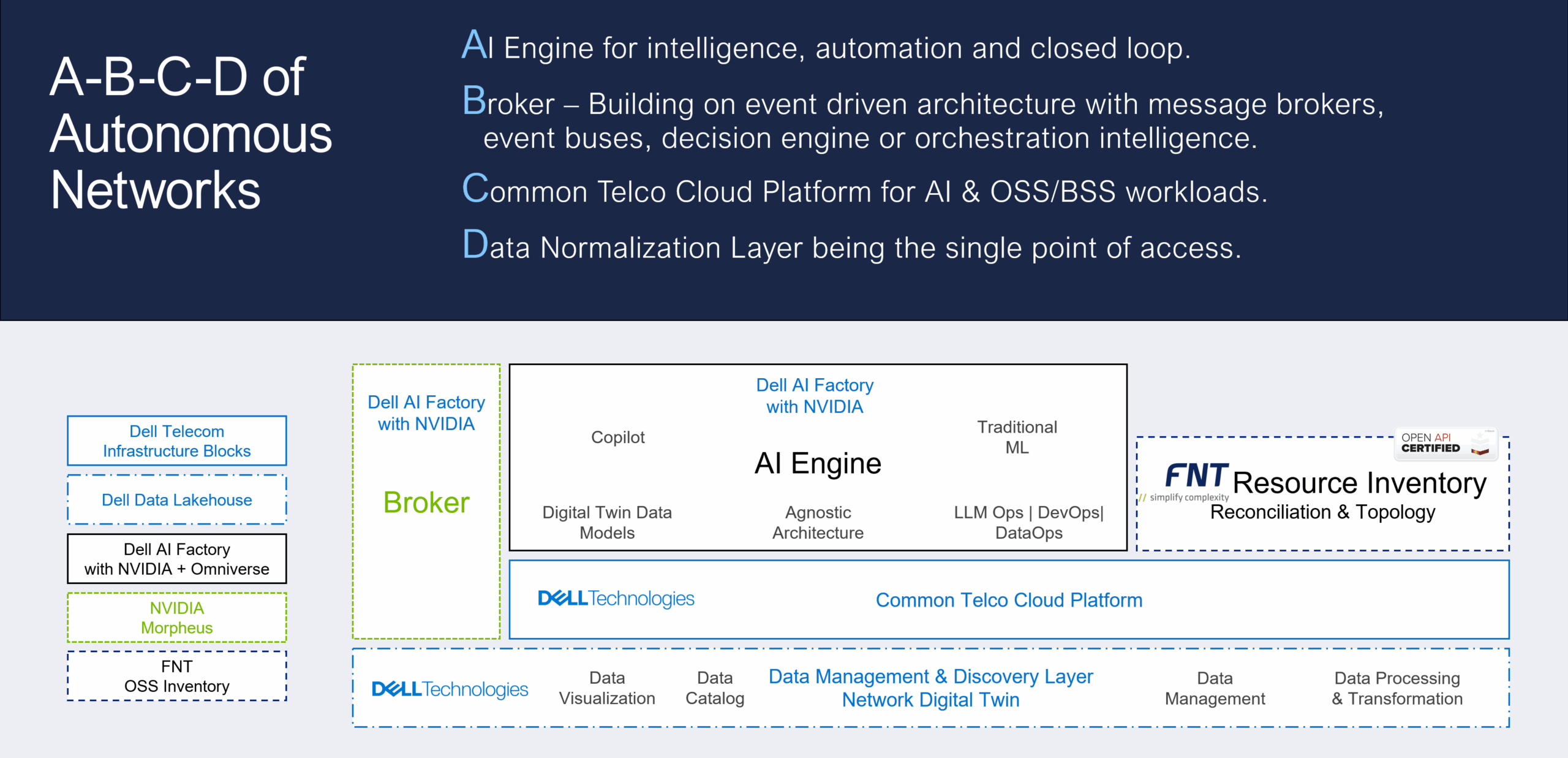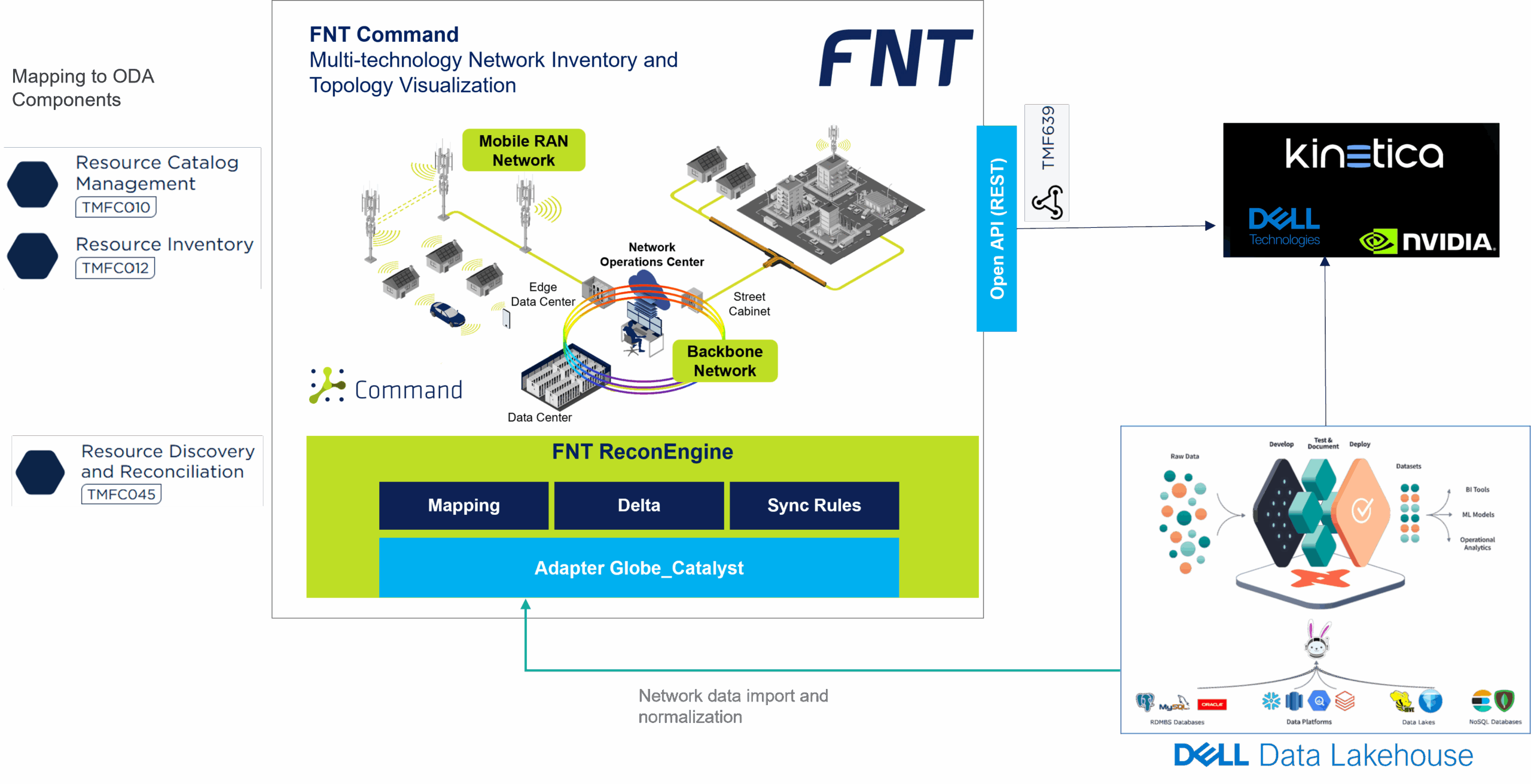
Read This Before Adopting AI
June 17, 2025
Oracle Launches First-of-its-Kind Defense Ecosystem to Redefine National Security Innovation
June 18, 2025The Challenge: Disconnected Data, Disconnected Decisions
Today’s telecom operators are expected to deliver consistent
and reliable network experience to consumer and enterprise customers. Managing
such a complex network requires high fault tolerance measured on its number of
9’s availability and shorter mean time to restore.
We understand that the autonomous networks initiative is the
key to driving operational excellence by embedding AI, digital twins, and
intelligent agents across network domains. Yet, one of the biggest challenges
for nearly all operators lies within their own assets: data. Data is the
critical fuel for autonomous networks—but today, most operators face
significant hurdles:
- Siloed
Data Sources – Disparate systems create inconsistent and
fragmented data, undermining the foundation of automation.
- Lack
of Data Governance – Without centralized control, data quality,
security, and compliance risks multiply, eroding trust and slowing
transformation.
- Inefficient
Data Processing – Inconsistent and incomplete data delays
reporting and decision-making, ultimately stalling self-optimizing
networks.
Any kind of automation we introduce will fail if data
integrity isn’t ensured, resulting in poor user adoption and operational
fallout. Take, for example, a policy-based auto-ticketing use case for RAN
faults: if the naming conventions for network elements differ between alarm
(Service Assurance) and ticketing (ITSM) systems—each maintained by different
teams—the mismatches will lead to failures in the automation workflow.
And that’s just a simple policy-based automation scenario.
If we move beyond static rules to dynamic, AI-driven, predictive operations
while still relying on fragmented data architectures, the impact becomes even
more severe:
- Delayed
incident resolution and prolonged outages
- Inconsistent
understanding of customer impact
- Persistent
reliance on manual or policy-driven processes
- Limited
ability to unlock the full potential of AI and automation
These challenges aren’t merely operational
inefficiencies—they are strategic liabilities in a world where customer
experience (CX) is the ultimate competitive differentiator.
The reality is this:
You can’t build predictive networks on a foundation of fragmented data.
In the AI era, garbage in means garbage out—data becomes the gold mine, and AI is only as good as the data feeding it.

To overcome this fragmentation and move toward autonomy, the PIONEER Catalyst—led by Globe, in partnership with Singtel Group, Dell Technologies, FNT, Kinetica, and NVIDIA—embraces the A-B-C-D framework to align with TM Forum’s Autonomous Networks vision.
A – AI-Native Operations Engine
At the core is an agentic AI engine, built on Dell Telecom for AI using Dell AI Factory with NVIDIA, to simplify and accelerate AI deployment. This foundation allows CSPs to focus on training and scaling models—without getting bogged down by infrastructure and integration challenges.
The AI engine ingests real-time data, learns from network patterns, and simulates actions via a geospatial digital twin before triggering orchestration—ensuring safe, intelligent, and cost-efficient automation.
B – Broker Layer: Event-Driven Coordination Across Domains
The system includes a real-time broker that ingests >5 million records per second, fusing telemetry, alarms, logs, and customer experience signals into a single decision plane. This broker acts as the nervous system of the architecture, connecting AI decisions to orchestration engines and service domains.
C – Common Horizontal Telco Cloud
Dell Technologies Infrastructure Blocks is an engineered system, co-designed with Red Hat and integrated in Dell's factory, include automation software to of Red Hat OpenShift. They include all the hardware, software and automation needed to streamline the design, procurement, deployment and scaling out a telco cloud. Infrastructure Blocks for Red Hat help operators break down technology silos and empower them to deploy a common cloud platform from Core to Edge to RAN. This includes hosting OSS applications like FNT and AI workloads.
D – Data Fabric: Clean, Contextual, Continuous
The Data Normalization Layer aggregates structured and unstructured data from across RAN, core, OSS, and IT systems, then reconciles it into an Open Data Format (ODF)—creating a common, machine-readable model aligned with TM Forum SID standards.
Built on the Dell Data Lakehouse for AI and powered by Starburst/Spark, this fabric supports real-time streaming and batch analytics, while enabling:
- Storage efficiency through data federation—no need to duplicate or move data
- A unified data catalog with embedded governance and policy controls
- Fast, federated querying across domains for AI training and operational insights

FNT reconciles and models the resource topology, while Dell
AI Factory with NVIDIA provides a GenAI interface offering a geospatial digital
twin and natural language co-pilot for real-time network insights.
FNT Command: Unified Inventory & Digital Twin
Why is the Inventory Layer important for autonomous network
architecture?
Autonomous networks rely on sense → analyse → act feedback
loops, with the Resource Inventory Layer providing essential, real-time data at
each stage.
- Sense
– Provides the AN system fault management with a comprehensive view of
monitored components.
- Analyse
– Correlation of alarms for more efficient root cause analysis.
- Act
–Identifies available resources needed for automatic fault resolution to
the AN system.
FNT Command acts as the asset Digital
Twin and single source of truth for all physical,
logical, and virtual network resources—enabling precise modelling, cross-domain
awareness, and clean data for AI.

Key Capabilities:
- Digital Twin Model: Provides a rich, field-tested model with 500+ classes and 80K+ device templates—essential for validating real-world constraints.
- Multi-Domain Resource Awareness: Supports diverse vendors, technologies, and layers—normalizing data across RAN, IP, and transport for fault detection and self-healing.
- Visualization for Human-in-the-Loop: Offers intuitive visual interfaces for transparency and informed action during semi-autonomous operations.
- Network Discovery & Reconciliation: Aligns live network state from Dell Data Lakehouse with inventory via the ReconEngine, producing delta reports and rule-based synchronization for closed-loop assurance.
- Trusted Data for AI: Supplies validated topology and resource data to the AI Engine layer—ensuring reliable input for predictions, simulations, and orchestration.
Outcomes your solution unlocks for business(es), the wider industry and society
As a key OpCo of the Singtel Group, Globe is leading the Group-wide Autonomous Networks (AN) program launched in 2023 — the proving ground for strategic innovation and scalable execution. Following TM Forum’s IG1326 blueprint, Globe is driving the development and validation of high-impact L3 and L3+ use cases across operations, with other OpCos set to adopt and scale these learnings.
This leadership model ensures a multiplied impact — reducing duplication, accelerating adoption across the Group, and delivering faster time-to-value. As Globe pilots toward L4 use cases starting in 2025, it sets the foundation for the Group’s transformation journey from automation (+AI) to autonomy (AI+).
Strategic Outcomes
- Business: Accelerates ROI through AI-driven network optimization, predictive assurance, and reduced OPEX.
- Group: Builds a reusable architecture and operational playbook for other OpCos; turning Globe’s success into a scalable framework.
- Industry & Society: Promotes standards-based collaboration, enhances service resilience, and supports sustainable, intelligent connectivity.
Readiness & Conclusion
The PoC use cases led by Globe are designed for transition, not experimentation. By using real network data, aligning with TM Forum standards, and leveraging open architectures, the solutions are engineered with a clear path to production.
Globe is not just testing technology — it is shaping what scalable, vendor-agnostic AN implementation looks like for telcos everywhere
Related Posts
Disconnected Data, Disconnected Decisions
June 18, 2025 0Read This Before Adopting AI
June 17, 2025 0



